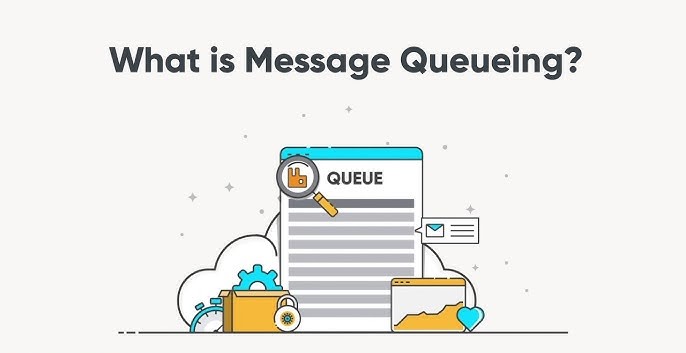What is Message Queuing? A Beginner's Guide
 Shivam Dubey
Shivam Dubey
In today's digital world, applications often need to communicate with each other to exchange information. Imagine an e-commerce website where a customer places an order. The website needs to notify the payment service, inventory management system, and shipping provider. But how do these services talk to each other efficiently? This is where Message Queuing comes in.
📨 What is Message Queuing?
Message Queuing is a method of communication between applications using messages. A message can be a simple text, a request, or any piece of information sent from one application to another.
Instead of sending messages directly, they are placed into a queue, like a line of people waiting for service. The queue temporarily holds messages until the receiving application (called a consumer) processes them.
🔎 Key Concepts
Message: The data being sent.
Queue: A storage location that holds messages.
Producer: The application that sends messages to the queue.
Consumer: The application that receives and processes messages from the queue.
🚦 Why Use Message Queuing?
Message Queuing provides several advantages:
Decoupling Applications: Producers and consumers don't need to communicate directly. They work independently, reducing complexity.
Reliable Communication: Messages are stored safely in the queue until they are processed.
Scalability: Multiple consumers can read from the same queue, allowing faster processing.
Asynchronous Processing: Producers can continue working without waiting for consumers to finish.
🛠 How Does Message Queuing Work?
Here’s a simple step-by-step explanation:
Producer sends a message: It sends a message to the queue.
Queue stores the message: The queue ensures the message is saved until a consumer reads it.
Consumer processes the message: One or more consumers pick up messages and perform the necessary tasks.
Acknowledgment: Once the consumer processes the message, it sends a confirmation to the queue.
🧑💻 Example Scenario
Let’s say you order a pizza online. Here’s how message queuing would work in the background:
You place the order - A message is created with your order details.
The message is added to the queue.
The payment service reads the message, processes your payment, and confirms.
The kitchen service picks up the order details and starts preparing your pizza.
The delivery service is notified once your pizza is ready.
Each service works independently using the queue, ensuring smooth and reliable communication.
🏁 Conclusion
Message Queuing is a powerful tool that helps applications communicate efficiently. It reduces complexity, ensures reliable message delivery, and improves system performance. As you continue learning, you’ll discover popular message queuing systems like RabbitMQ, Apache Kafka, and AWS SQS.
Stay tuned for more detailed lessons on how to implement and optimize message queuing systems!
Happy Learning! 😊
Subscribe to my newsletter
Read articles from Shivam Dubey directly inside your inbox. Subscribe to the newsletter, and don't miss out.
Written by
